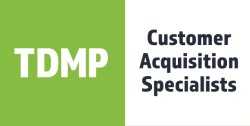From Microsoft’s official launch of Copilot Search to Google Discover's journey to desktop — here are your key search updates from the first half of April!
Google Search
AI Overviews appearing more frequently
Tools tracking AI Overview appearances are showing a significant increase in overview frequency compared to March.
Each data provider offers a different estimate on the rate of AI Overviews served on Google’s SERPs, but the notion there has been a steady yet significant increase as of late is unanimous.
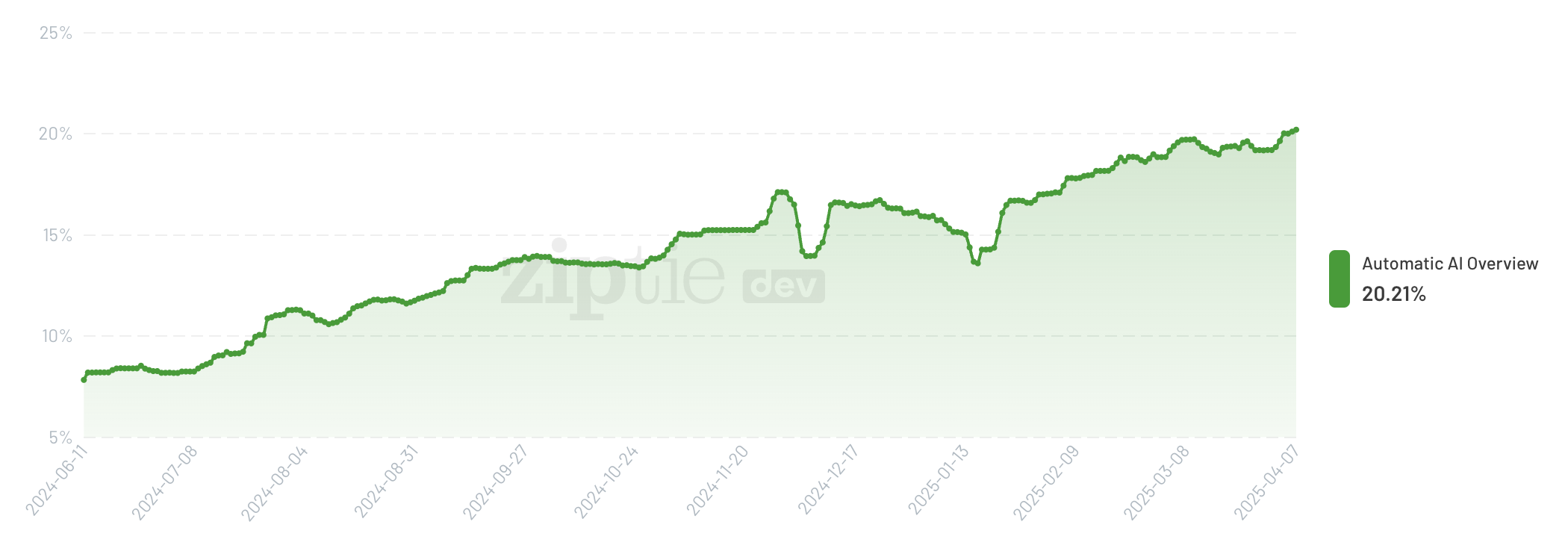
Source: Ziptie
For publishers…
You may be experiencing a slight decline in organic clicks, especially if you publish primarily informational content. AI Overview frequency may well go into regression in the near future as Google tests different calibrations, but, regardless, our advice is to start optimising for visibility in AI search results.
AI isn’t going anywhere and will become more prevalent over time, so incorporating it into your digital strategy now will grant a resilient posture as search evolves.
At TDMP, we’ve long been preparing for the shift to AI-driven search. We incorporate cutting-edge AI optimisation tactics into our SEO strategies to help clients stay visible on traditional SERPs while also carving out a presence in emerging AI-powered platforms. Contact us today to find out how we can do the same for your business.
Google testing different linking formats in AI Mode
People are spotting anchor text source links within the textual responses of AI Mode; this is in addition to the little paperclip icons currently used in AI Overviews.
Who knows what approach Google will stick with in the end — if they ever stop iterating — but it would be great to see this feature stay.
For publishers…
Anchor text links are far more visible and feel more direct than the paperclip icons. This style will give websites a much better chance of seeing some traffic via Google’s generative search portal.
If they do stay, we first recommend carrying out research to try and ascertain (at least vaguely) how AI Mode chooses which citations appear behind the paperclip icon and which are displayed within the text itself.
You could start this process simply by clicking through on both types of citations and comparing the pages. That said, Google may well have moved on to a different approach by the time AI Mode sees a full UK release.
You can keep up with the latest AI Mode developments in our guide: Google AI Mode for Search: Everything we know so far
Google Discover coming to Google’s homepage on desktop
Google has been working on bringing Discover to desktop for years — and now it’s actually happening.
The news was revealed at Search Central Live in Madrid on April 9th via the below pictured Discover slide reading ‘Expanding surfaces - desktop Search’.
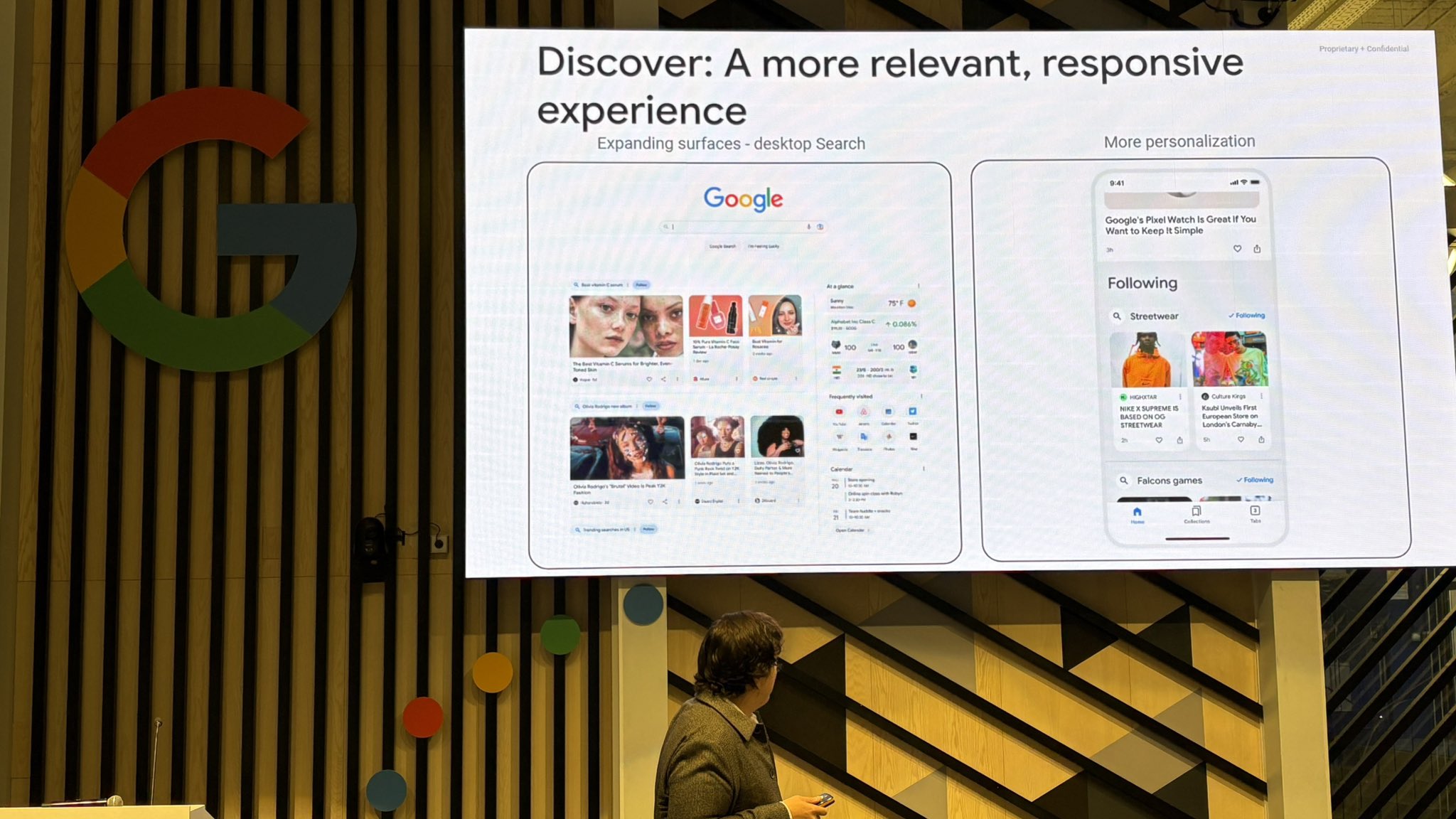
Source: SERoundtable
For publishers…
This opens up yet another new venue to vie for visibility. Optimising for Discover has always been worthwhile, but now with desktop users seeing a personalised content feed on the Google homepage, the potential audience just got significantly larger.
It’s a chance to engage users in a more native, interest-driven way — but also one that demands high-quality, relevant content to cut through the noise and stay visible in an increasingly curated environment.
Bing Search
Copilot Search is officially live
Microsoft officially announced the launch of Copilot Search — Bing’s version of Google’s AI Mode — on April 4th, claiming, ‘Copilot Search seamlessly blends the best of traditional and generative search together to help you find what you need — and meet you where you’re at in your discovery journey.’
Copilot Search has a clean, easy to navigate UI, and — credit where credit’s due — there’s an option to ‘See all links’ right at the top of the response.
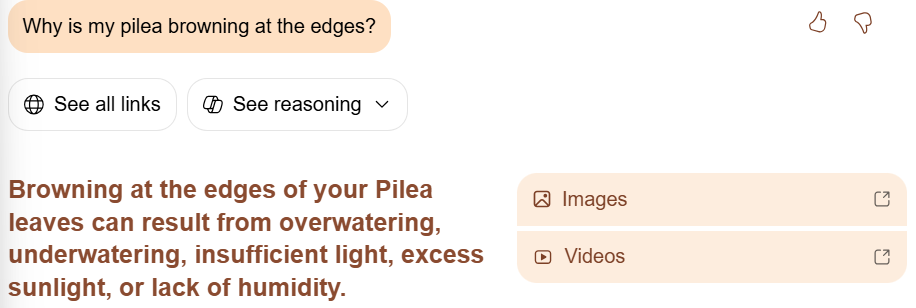
But, like AI Overviews, Copilot Search's in-text citations are marked by small icons that, despite being highlighted, aren’t that eye-catching.
When you hover over a citation icon, a carousel is overlaid on the results, giving you the chance to cycle through the citations for the generated paragraph in question.
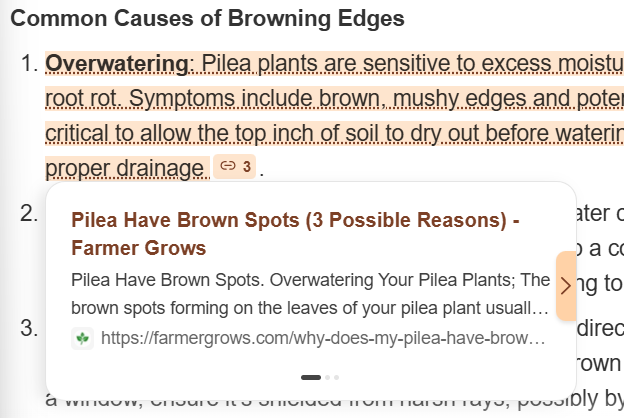
Thankfully, the primary sources are also presented in large, highlighted boxes at the end of the generated response, but there seems to only be room for 3 — with the rest accessible via a smaller ‘View all’ box.

For publishers…
This means your Bing traffic is likely going to take a hit unless you can secure regular, well positioned citations in Copilot Search responses.
Being the first website in the overlay carousels or securing one of the three large placements at the end of the results page will give you a significant advantage over competitors.
Paid media
Google is using your marketing emails to enhance search listings
Google Merchant Centre has begun automatically enrolling merchants in a new feature that allows Google to access content from their marketing emails.
The goal is to extract promotional information — like new product drops, special offers, social media links, and brand visuals — and use it to enhance listings and visibility across Google Search, Shopping, and Maps. Merchants can opt out of this feature at any time via their Merchant Centre settings.
For merchants…
Google using your marketing emails to enrich product listings could boost visibility with minimal effort. But it comes with trade-offs.
- Pros: If your email content is strong, this can extend your reach and drive engagement without extra work. It’s a low-lift way to amplify promotions across Search, Shopping, and Maps.
- Cons: You lose some control over how and when content appears. Inconsistent messaging, outdated offers, or compliance-sensitive content could create issues.
If brand control or regulatory concerns are key, opt out. But if your emails are polished and aligned with your public-facing strategy, staying opted in could be a real advantage.
In short: this favours marketers who treat email as a core part of their content strategy — not just a siloed channel.
Microsoft Advertising announces several updates
Microsoft Advertising is rolling out updates, including streamlined shopping campaign processes, improved local inventory ads, and enhanced audience targeting features.
Notably, LinkedIn profile targeting is now available globally, and Performance Max campaigns are getting better audience insights and asset-level conversion metrics.
For advertisers…
Not all the announced changes are worth writing home about, but we’ll always welcome greater Performance Max campaign insight. As effective as this campaign type can be, the PMax process is arguably quite opaque, so this is a step in the right direction.
The more data made available, the better you can finetune your campaign!
Already using Microsoft Advertising and wonder how it compares to Google Ads? Read our guide to find out: Microsoft Advertising vs Google Ads: Which is right for your brand?
Stay current with TDMP
As search continues to change, staying informed is key to maintaining and improving campaign performance. For tailored guidance and comprehensive digital marketing support, contact TDMP today.
